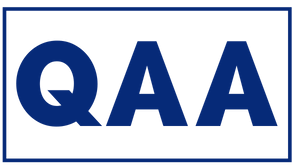Effective Training Equals Skilled, Efficient Workforce
18 December 2018

Overall Training State
The Associate for Talent Development recently released the 2018 State of the Industry report. With about 400 organizations participating, ATD found that organizations spent $1,296 per employee for training. Each employee spent an average of 34.1 hours in training. With this much money and hours spent on each employee for training, organizations need to know the training is effective and what the employees need to efficiently accomplish their jobs.
Current Research Trends
Recent research identified areas that currently offer little or no training. These training deficits have been identified by employees and organizations as areas of concern.
Lack of Knowledge Sharing

Our blog ‘Why Silo Knowledge Sharing?’ detailed some of this topic. Panopto’s Workplace Knowledge and Productivity Report found further proof of the need to share knowledge. Because former and transitioning employees have not shared their knowledge in some meaningful way, 70 percent of the respondents believe the knowledge is lost.
Therefore, the organization must spend money to recreate or attempt to recreate the knowledge. Instead, the report estimates that small businesses could save $2 million and large organizations $200 million in employee productivity by preserving and sharing knowledge.
No Upskilling or Reskilling

A recent report Upskilling and Reskilling: Turning Disruption and Change into New Capabilities found that 44 percent of organizations do not offer employees an opportunity to progress in their careers. The anticipated benefits include talent retention, performance, and engagement levels. Organizations’ motivators include skill gaps, deficits in critical roles and other pipelines, and aging workforce.
Of the 56 percent of organizations who did offer upskilling and reskilling programs, only 25 percent of participants had high levels of success which suggests overall improvement is required. The best practices identified within the study seem simple and are associated with better learning and marketing outcomes – analysis. The organizations use internal career progression programs, implementation of training program or assignment rotation, and tuition assistance programs.
Digital Skill Deficits
According to Brian Kropp, group vice president of Gartner’s HR practice, “More than two-thirds of business leaders believe that if their company does not become significantly ditalized by 2020, it will no longer be competitive.” What does this mean for their employees?
Organizations desire employees to become more skilled in data analytics, mobile management, machine learning, social media, security and privacy, and smart technologies. Unfortunately, 70 percent of employees do not have these skills and four of five employees do not have skills for future roles.
Discovering Organizational Trends
Although it is important to look at trends and overall research, it is also important to consider each organization’s needs. Data and needs analysis will allow for customization of training for employees based on current and future organization needs. In addition, organizations will be able to save money by targeting the training to meet goals and objectives.
